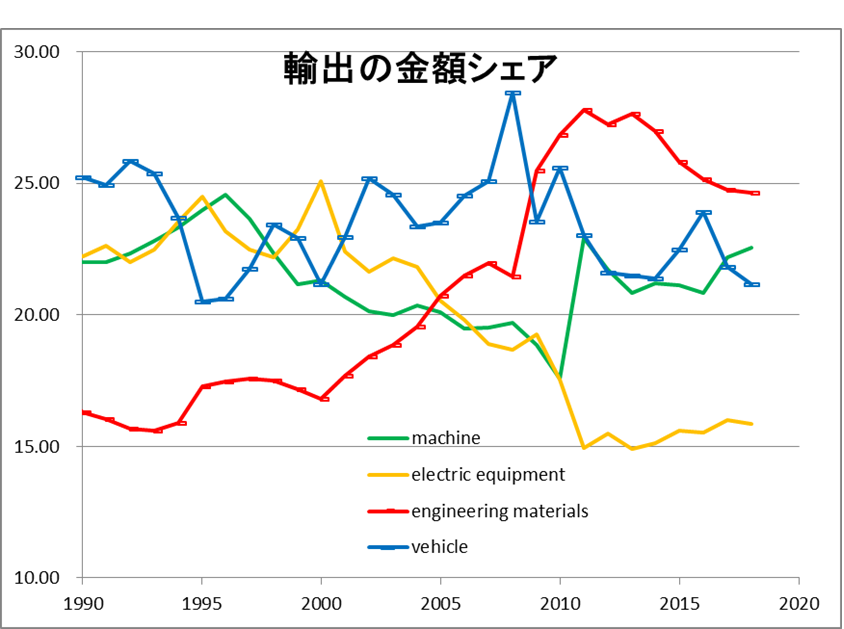Summary of the presentation by Dr. Kohmei Halada at the 164th Annual Spring Meeting of the Japan Institute of Metals and Materials “The Position of ’Monozukuri Japan(Japanese manufacturing)’ as seen in the Changes of Metal Trade Flows in the Last 30 Years”, March 20, 2019

This presentation is a follow-up to “The Position of Japan’s Materials Industry as seen in Trade Flows,” which was published by the author in 2009. This paper showed the importance of the industrial materials industry and technology in society to the extent that it gave rise to the expression “Materials Japan”. In the 10 years since then, the industrial materials industry has undergone rapid changes. Now that it has been 30 years since the burst of the economic bubble, let’s look back in history to see how it has changed. [Method]
The trade flow data was obtained from the database of the United Nations Commodity Trade Statistics Database (UN Comtrade). The top 10 countries in terms of total annual exports and imports of the target items, and the top 20 cases of bilateral trade from the data of the importing countries were obtained. These data were processed by Visual Basic for Applications (VBA) for Office and illustrated on a deformed map. In this case, grey circles represent total exporting countries, white circles represent total importing countries, and bilateral trade is represented by an arrow from export to import with its thickness as a ratio to the total world trade value. Each country is represented by a two-digit UN code.
For the breakdown of Japan’s exports, we used the export value data in the item table of the trade statistics. The items were classified into industrial materials, instruments, electrical and electronics, transport machinery, and others. In addition, industrial materials were reclassified into chemicals, plastics, ceramic materials, ferrous and nonferrous metals, constituent base materials, products, etc., and the total export value and the ratio to the export value of industrial materials were obtained. In addition, the term “base materials” refers to materials (prepared materials, member subjects) that have been prepared for some of the functions of the product (including structural functions), and the classification of ferrous and nonferrous metals and plastics is limited to general-purpose primary processed materials.
 Loading...
Loading...
As an example of the trade flow diagram obtained, the flow of iron in 1988 is shown. It shows the global trilateral structure of Japan, the U.S., and Europe that has been formed in the typical 20th century. This has changed to an areaized structure of East Asia, the US, and Europe in 2017. Non-ferrous metal flows have been concentrated in China over the past few years, with a particularly marked concentration in ore flows. Industrial materials, which accounted for only 10% of Japan’s exports in 1988, have played a leading role in the 20th century, and as of 2017, they still account for a quarter of the export value share, surpassing machinery, transportation equipment, and electrical and electronic equipment. Among industrial materials, a high percentage is constituent base materials. The key to Japan’s manufacturing is the constituent base materials, and it is necessary to distinguish between general-purpose materials and structural base materials prepared for specific purposes in the future.

ディスカッション
コメント一覧
まだ、コメントがありません